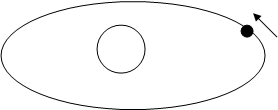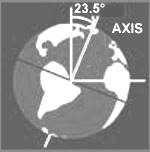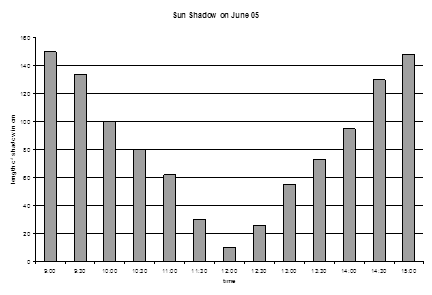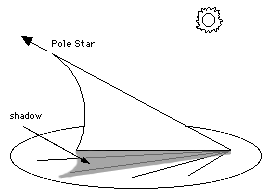Study Guide- Sky Science
Our Solar System

Spiral |
Elliptical |
Irregular |
Layers of the Atmosphere
Troposphere
|
Stratosphere
|
Mesosphere
|
Thermosphere
|
The Earth’s Moon
Phases of the Moon
Planets
The order of the planets, from the Sun out are:
Mercury
Venus (My Very Excellent Mother Just Sent Us Nine Pizzas)
Earth
Mars
Jupiter
Saturn
Uranus
Neptune
Pluto
The Inner Planets are Mercury, Venus, Earth, Mars. They are called the Rocky planets.
The outer planets are Jupiter, Saturn, Uranus, Neptune, Pluto. They are the Gas planets.
Category |
Sun |
Mercury |
Venus |
Earth |
Mars |
Jupiter |
Saturn |
Uranus |
Neptune |
Pluto |
Distance from Sun |
|
57.9 |
108.2 |
149.6 |
227.9 |
778.3 |
1 427 |
2 871 |
4 497 |
5 913 |
Period of revolution |
|
88 |
224 days |
365 days |
687 days |
12 years |
29 years |
84 years |
165 years |
248 years |
Diameter |
1.39 million |
4880 |
12 100 |
12 756 |
6 786 |
143 200 |
120000 |
51 800 |
49 528 |
2330 |
Atmosphere |
Hydrogen |
Virtually none |
Carbon Dioxide |
Nitrogen |
Carbon Dioxide |
Hydrogen |
Hydrogen |
Hydrogen |
Hydrogen |
Methane |
Moons |
|
0 |
0 |
1 |
2 |
16 |
18+ (?) |
15 |
8 |
1 |
Rings |
|
0 |
0 |
0 |
0 |
1 |
1 000 (?) |
11 (?) |
4 |
0 |
Rotation Period |
26.8 days |
58.9 days |
243 days |
24 hours |
24 hours |
10 hours |
10 hours |
17 hours. |
16 hours |
6 days |
The inner and outer planets are separated by the asteroid belt between Mars and Jupiter.
Moons of other planets have similarities and differences to our own Moon.
Similarities |
Differences |
Are called satellites |
Some are different shapes- not all are spherical (circle shaped) |
Orbit around the planet |
Some are made up of different materials |
|
Some are different weight and mass |
The Sun

The Seasons
There are 4 main seasons in the Northern Hemisphere
Season |
Date it begins |
Tilt |
Rays |
Summer |
June 21 |
Northern hemisphere towards the sun |
Direct |
Fall |
September 21 |
Neither tilted towards or away from the sun |
Neither direct nor indirect rays |
Winter |
December 21 |
Northern hemisphere tilted away from the Sun |
Indirect rays |
Spring |
March 21 |
Neither tilted towards or away from the sun |
Neither direct nor indirect rays |
On December 21, we have the shortest day of sunlight and the longest night.
Northern Hemisphere |
Southern Hemisphere |
Summer |
Winter |
Fall |
Spring |
Winter |
Summer |
Spring |
Fall |

Day and Night
Sun shadows



![]()

Stars and Constellations
over the North Pole.
Space Exploration
|
Earth Sensing Satellites |
Space Sensing satellites |
Communication Satellites |
Navigation Satellites |
What they do |
Sensors study different places on Earth |
Above the Earth’s atmosphere to study space clearly |
Send radio signals from one place on Earth to another |
Help guide ships and planes by listening to the signals sent |
Examples |
Weather satellites |
Solar Maximum satellite |
Intelsat |
Navstar |
Source: http://gp.lethsd.ab.ca/documents/homework/Sky%20Study%20Guide_1.doc
Web site to visit: http://gp.lethsd.ab.ca
Author of the text: not indicated on the source document of the above text
If you are the author of the text above and you not agree to share your knowledge for teaching, research, scholarship (for fair use as indicated in the United States copyrigh low) please send us an e-mail and we will remove your text quickly. Fair use is a limitation and exception to the exclusive right granted by copyright law to the author of a creative work. In United States copyright law, fair use is a doctrine that permits limited use of copyrighted material without acquiring permission from the rights holders. Examples of fair use include commentary, search engines, criticism, news reporting, research, teaching, library archiving and scholarship. It provides for the legal, unlicensed citation or incorporation of copyrighted material in another author's work under a four-factor balancing test. (source: http://en.wikipedia.org/wiki/Fair_use)
The information of medicine and health contained in the site are of a general nature and purpose which is purely informative and for this reason may not replace in any case, the council of a doctor or a qualified entity legally to the profession.
The following texts are the property of their respective authors and we thank them for giving us the opportunity to share for free to students, teachers and users of the Web their texts will used only for illustrative educational and scientific purposes only.
All the information in our site are given for nonprofit educational purposes
The information of medicine and health contained in the site are of a general nature and purpose which is purely informative and for this reason may not replace in any case, the council of a doctor or a qualified entity legally to the profession.
www.riassuntini.com